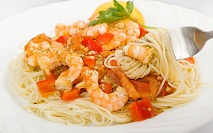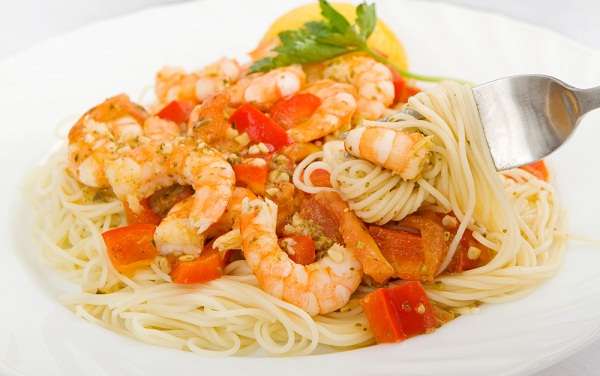Keeping Portions under Control

Bagels as big as frisbees! Muffins the size of flower pots! Bowls of pasta so deep, your fork can barely find the bottom!
At Camp Shane weight loss camp for kids, we provide portion-controlled meals that are nutritious and tasty, because we recognize that balanced eating for effective weight loss has more to do with quality than quantity.
The Truth About Serving Sizes
Contrary to popular belief, the serving size on a food label is not telling you the amount you should be eating. The serving size is a guide to help you see how many calories and nutrients (as well as how much fat, sugar, and salt) are in a specific quantity of that food.
Serving size. Sometimes, the serving size on the food label will be a lot less than you are used to eating or serving. In some cases, it is fine (and even a good idea) to eat and serve more than the serving size listed. For example, if you’re cooking frozen vegetables and see the serving size is 1 cup, it’s no problem to serve or eat more because most vegetables are low in calories and fat, yet high in nutrition.
Recommended amounts. Serving sizes tell you how much nutrition you’re getting from a particular food but they don’t tell you which foods you need to stay healthy, or how much of those foods you should eat.
Portion-Control Tips
It’s easy to understand why the food industry tends to serve us way more food than is necessary. We all love to feel like we’re getting more bang for our buck. But that’s also why it’s important to take responsibility for our own portions and to help kids learn to do the same.
Here are some tips:
- Explain the concept of the “divided plate” to your kids and use it as often as you can, balancing fruits and veggies against smaller portions of protein and grains.
- Trick the eye – serve food on smaller plates so meals look larger. A sandwich on a dinner plate looks lost; on an appetizer plate it looks downright hefty.
- After cooking large batches or when storing leftovers, separate them into smaller portions before refrigerating or freezing them. That way, when your family reaches in, they’ll automatically grab a portion that makes sense.
- Dish out meals at the counter. Not keeping the food at arm’s length can make your family think twice about reaching for seconds. Offer more veggies or salads if “seconds” are requested.
- Try single-serving size products to help your family learn what an appropriate portion is.
- Try not to rush through meals. Go slowly and give everyone a chance to feel full before serving more. Family sit-down meals also provide valuable opportunities to reconnect with one another.
- Be aware that most restaurant portions may be two, three, or more times the recommended serving size. Try sharing meals, ordering an appetizer as a main dish, ordering kids’ meals (especially at fast-food restaurants), or packing up half to take home before you begin to eat.
- Don’t be tempted to go for the giant value meal or the jumbo drink just because they’re just a few cents more than the regular size. The “deal” is no value when it triples your family’s calories!
- Don’t serve kids large portions or expect them to clean their plates. Not only do kids need less food than adults, but studies show that preschoolers do a better job controlling portion size when they’re allowed to serve themselves.
Getting Kids Involved
Remember the role you play in showing kids how to correctly size portions. If you eat two heaping helpings every night, that is what your kids will learn too.
As kids grow their appetites will vary depending on a number of factors. They tend to be hungrier during growth spurts or sports seasons when they’re more active and less hungry during downtimes. As their appetites change, keep serving right-sized portions and encourage them to slow down to enjoy their food. Then check in on whether they’re full before they go for seconds.
Camp Shane is a member of the Together CountsTM program that offers weight loss programs for children, teens, young adults and adults in New York, Arizona, California, Georgia, and Texas. Visit them on the web at www.campshane.com or www.shanedietresorts.com. You can find us on Facebook ,Twitter and YouTube. This post was originally published on CampShane.com

